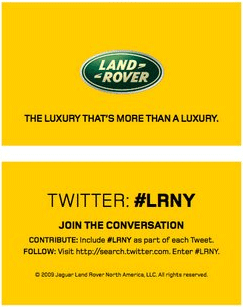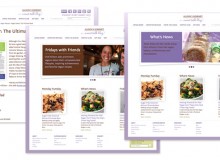 My colleague, Julia, had already plunged into social media with her successful SnarkyVegan blog. I, on the other hand, was a rookie and a skeptic at that. But as we strategized about ways to establish thought leadership for the agency, we decided that enewsletters, which would roll into blogs, would be a good starting point. The result was MondoBeat: Ideas to Improve Your Marketing Rhythm.
My colleague, Julia, had already plunged into social media with her successful SnarkyVegan blog. I, on the other hand, was a rookie and a skeptic at that. But as we strategized about ways to establish thought leadership for the agency, we decided that enewsletters, which would roll into blogs, would be a good starting point. The result was MondoBeat: Ideas to Improve Your Marketing Rhythm.
To say the least, one thing led to another. Strong reception to the enewsletter/blog began to pique our interest. Soon we were announcing new posts at our Twitter sites, and I began to wonder if there was any potential in our mostly dormant LinkedIn accounts.
So Julia and I got busy completing our profiles, linking feeds from our blog, posting slide presentations, connecting with colleagues and participating in groups. Along the way, I was invited to manage my college’s alumni group as well as another group. So I got to see “groups” from both the participant and manger perspectives.
What We Learned
Clearly social media is evolving and participants are evolving along with it. Here are three key findings from our experience:
1. Synergy Counts.
The more options we integrated into our social media goal of growing our thought leadership perception, the better we did. More people started to follow us on Twitter, and we connected with more and more people on LinkedIn. Both are significant drivers of readers to the blog, and LinkedIn is now our number one source of hits and page views.
Of course everyone always wants to know if you were able to monetize social media. That was not our goal—thought leadership was—but we did receive several inquiries about our services and made presentations as a result of our social media experiences.
Additionally:
- Our customers are virtually all loyal readers of our enewsletters/blogs.
- We found a capable subcontractor through a renewed contact made on LinkedIn and used the individual on a project.
- The enewsletter/blog grew to the point that we are now considering offering sole sponsorship opportunities for each issue (you’ll eventually be able to judge that success for yourself).
- We are now more knowledgeable, empathetic social media advisors to our clients—you know the old adage about the best doctor being the one who just got out of the hospital.
2. Participation Counts.
If you want to benefit from social media, you have to be willing to participate on a consistent, frequent basis. You also need to be willing to learn the rules of social media so that your participation helps, not hurts your business. And you need to set your internal social media goals and appoint someone to coordinate your social media team.
In addition to getting some professional advice, we recommend taking one of the many good social media classes available. Some even offer social media certifications. The more skillfully you employ social media, the better the results.
3. Participation Takes Time.
Don’t get caught up in the notion that social media is free. It will definitely cost you time, a valuable commodity in today’s downsized companies. We easily spend an hour to an hour-and-a-half per day on social media, and that excludes writing our enewsletter/blog posts. You may be able to—and probably should—share some of the responsibilities, but don’t start if you’re not willing to commit the time. As a point of reference, many large companies now have one or more people on staff who do nothing but monitor social media.
Finally, remember that social media is primarily for relationship and thought leadership building. It should be part of your marketing plan, but continue to leave the heavy lifting to postal mail, email, print advertising and marketing media better suited to directly generating sales and ROI.
By Larry Bauer
Want Expert Advice?
MondoVox Creative Group can help you with social media strategy through program deployment. For more information, email Julia Moran Martz.
You can connect with Julia Moran Martz on LinkedIn. Or follow her on Twitter.









